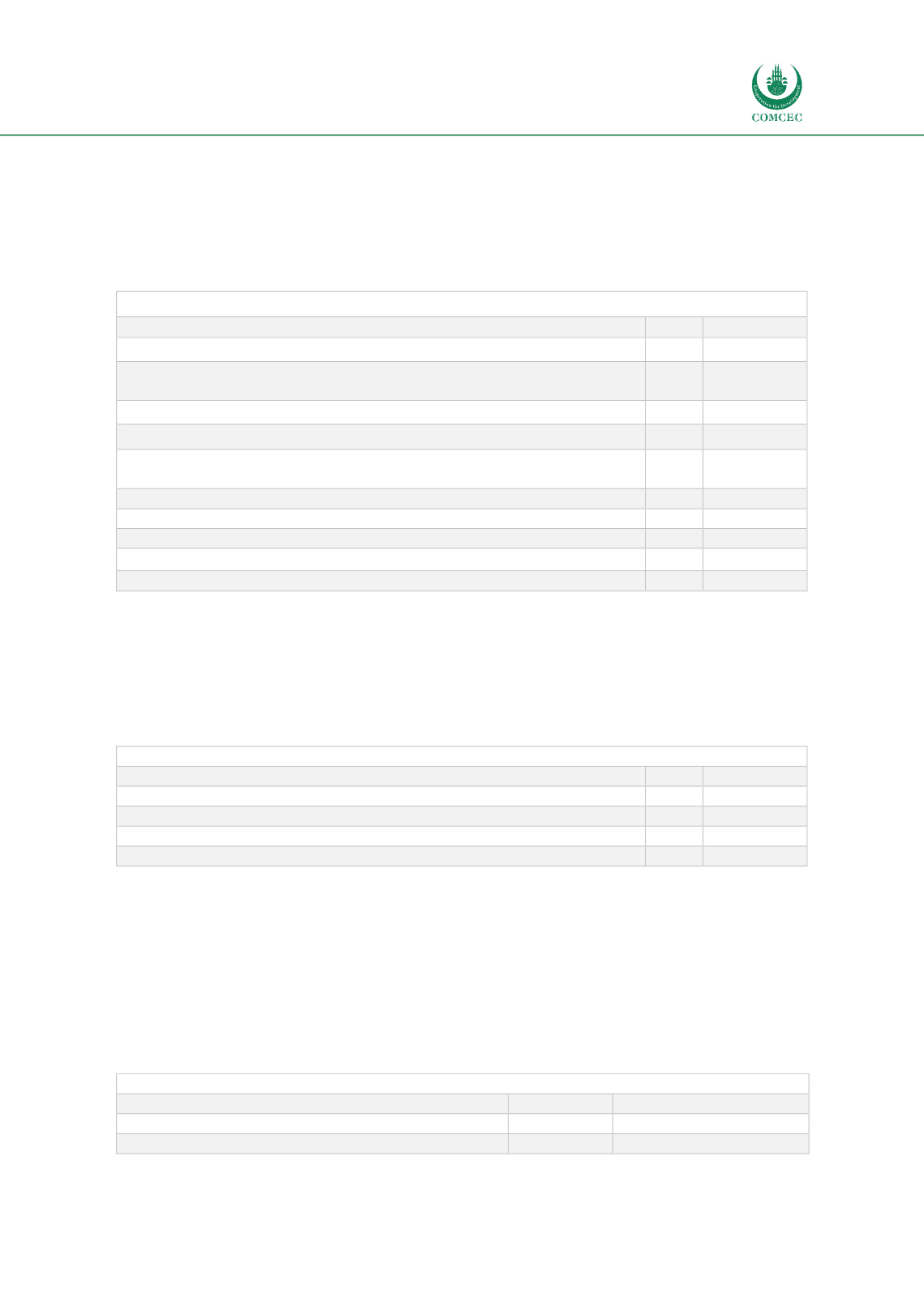

Improving Customs Transit Systems
In the Islamic Countries
85
3.1.1.3
Guarantee management and monitoring system
83.3% of the respondents accept guarantees and bonds as a security measure for CTR, but also,
they accept cash deposit, international and regional guarantees
(Table 14).
Table 14: Form of non-monetary guarantee
17. Form of non-monetary guarantee
N
Percent
Cash deposits (national or foreign currency)
4
66.7%
Temporary placement of funds on the Customs administration’s bank
account
1
16.7%
Tradable securities
1
16.7%
Movable property (e.g. means of transport) pledge agreement
0
0.0%
Non-movable property (e.g. office or production premises) pledge
agreement
0
0.0%
Bank guarantee
4
66.7%
Insurance policy
1
16.7%
Surety contract
1
16.7%
International guarantees
2
33.3%
Regional guarantees
2
33.3%
Source: Authors’ own compilation
In most cases, the guarantees are limited to the amount of duties and charges if the goods are
imported into the country
(Table 15). One country is not limiting the guarantees to the amount
of duties.
Table 15: Guarantees limited to the value of duties and charges
18. Are the guarantees limited to the value of duties and charges
N
Percent
Guarantees are not limited to the amount of duties and charges
1
20.0%
Guarantees are limited to the amount of duties and charges (taxes)
4
80.0%
Other
1
20.0%
Total
6
120.0%
Source: Authors’ own compilation
40% of the respondents calculate the guarantee amount according to risk level and guarantee
waiver, while 60% doesn't relate guarantee calculation with the risk level. In 66.7% of the cases
applicable regional or international agreements specify/support the issued transit guarantees.
In most of the cases, the release of the guarantee is done automatic or in one to three days that
is based on the time frame in which the goods exit the transit country
(Table 16).
Table 16: Guarantee release
21. Guarantee release
N
Percent
Automatic release
1
20.0%
Within 1 day
2
40.0%
















